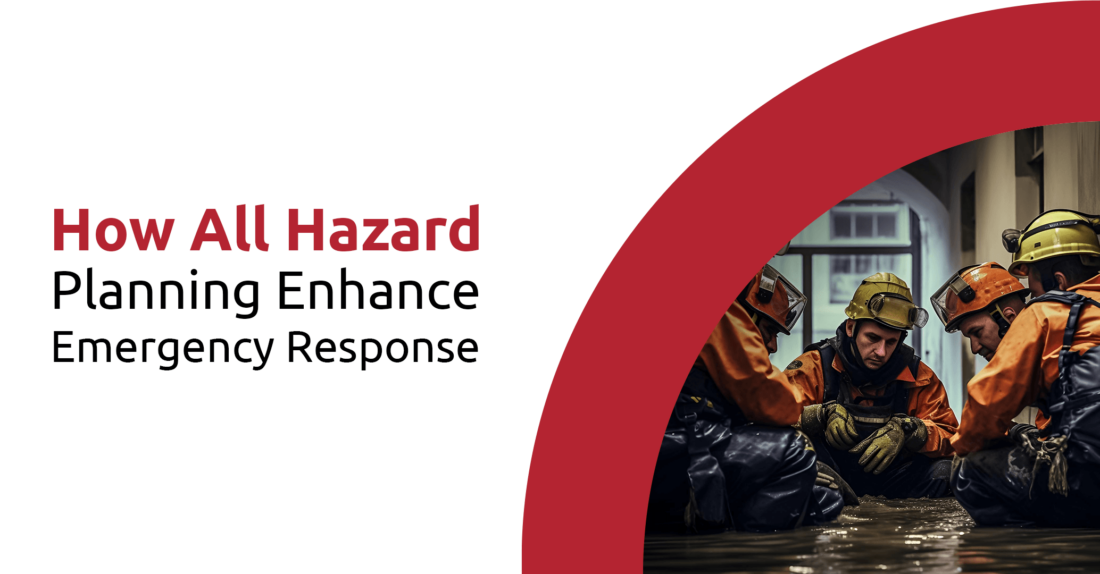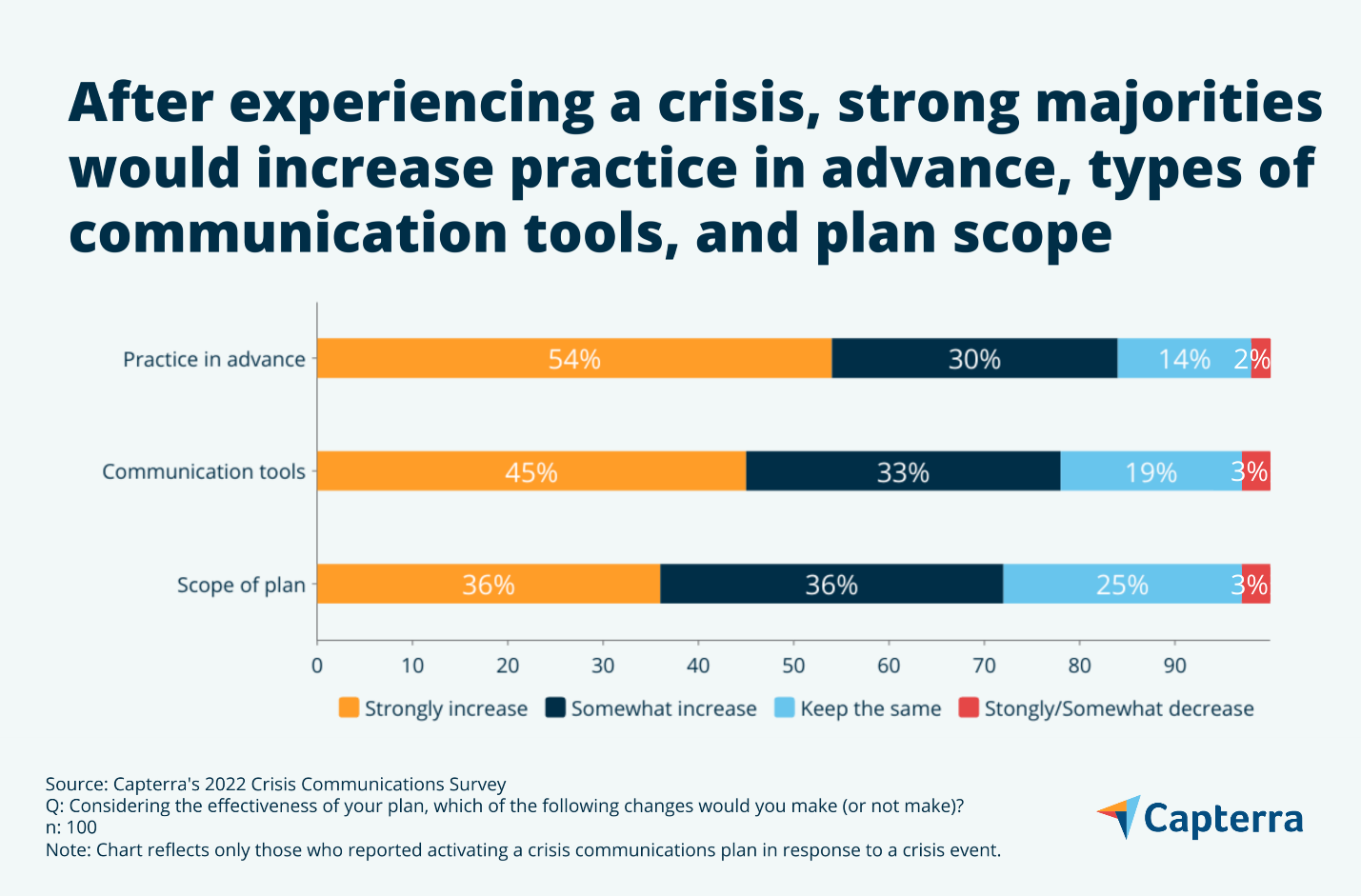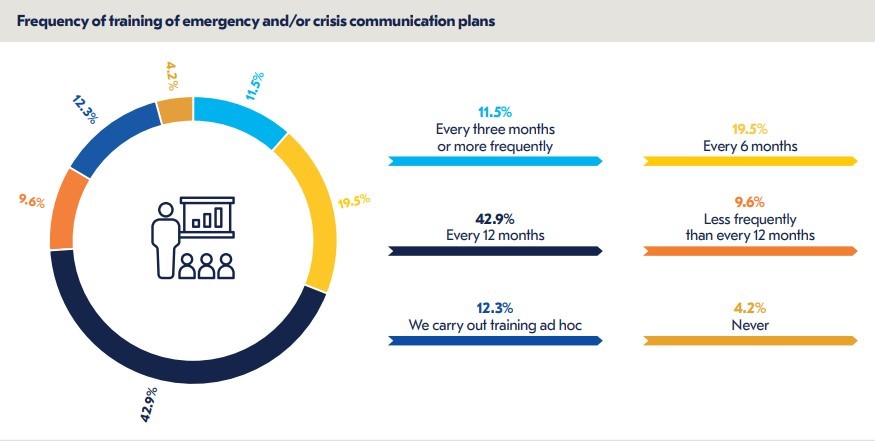
How All-Hazard Planning Enhances Emergency Response
In today’s fast-evolving and interconnected business environment, the importance of preparedness cannot be overstated. The landscape is fraught with uncertainties, from natural disasters to cyber threats, each carrying the potential to disrupt operations and inflict significant damage. This unpredictable environment underscores the need for a robust and comprehensive approach to emergency preparedness that transcends traditional planning methodologies.
Statistics elaborate on the current state of crisis management and the glaring need for enhanced preparedness. Compounding this need, PwC’s Global Crisis and Resilience Survey 2023 reveals that a staggering 96% of organizations have encountered some form of disruption over the past two years, highlighting the ubiquitous nature of threats in the modern business era. A full 84% of business leaders who have faced a crisis concede that increased practice in advance would have been beneficial, with more than half stating a strong need to increase their preparatory exercises. Furthermore, an overwhelming 78% of leaders express the intention to enhance the tools utilized for communication during crises, while 72% acknowledge the necessity to broaden the scope of their preparedness plans. These figures underscore a collective realization among business leaders to fortify their organizations against unforeseen challenges.

Source: Capterra’s 2022 Crisis Communications Survey
Against this backdrop emerges the concept of “all-hazard planning,” a holistic strategy that prepares businesses to face any type of emergency, whether natural or man-made. This comprehensive approach to emergency preparedness is designed to equip organizations with the tools, knowledge, and procedures to navigate the complexities of crises, ensuring a swift, coordinated, and effective response. All-hazard planning means a paradigm shift in how businesses approach emergency preparedness, emphasizing the need for a versatile and adaptable strategy in today’s volatile business landscape.
Understanding All-Hazard Planning
The evolution of emergency response has undergone a significant transformation, moving away from siloed, single-hazard plans towards a more integrated, all-hazard approach. This evolution reflects an understanding that emergencies are rarely predictable and seldom confined to a single type of incident. All-hazard planning embodies this shift by preparing organizations to respond to a wide array of emergencies, whether they stem from natural disasters, technological failures, or man-made events. This approach offers several key benefits:
Increased Preparedness for a Wider Range of Emergencies: By considering a wider spectrum of threats, organizations can develop more versatile response strategies that are not limited to specific scenarios.
Streamlined Planning and Resource Allocation: A single, unified plan eliminates the need for multiple, redundant plans, leading to more efficient resource allocation and utilization.
Enhanced Coordination and Collaboration Across Different Response Teams: A centralized plan fosters better communication and collaboration between different departments and response teams, ensuring a more cohesive and effective response.
Improved Efficiency and Effectiveness of Emergency Response: A comprehensive plan allows for quicker decision-making and a more coordinated response, minimizing the impact of emergencies and ensuring a faster recovery.
Reduced Business Disruptions and Downtime: By being prepared for a wider range of potential threats, organizations can minimize the impact of disruptions on their operations and reduce downtime, ensuring business continuity and financial stability.
The core components of an all-hazard plan include:
Hazard Identification and Risk Assessment: This involves identifying all potential threats within the organization’s operating environment and evaluating their likelihood and potential impact.
Business Impact Analysis and Resource Needs Determination: This entails assessing the potential impact of various threats on different aspects of the business and identifying the resources needed for effective response and recovery.
Development and Implementation of Response Strategies: This involves creating a comprehensive set of strategies for prevention, mitigation, response, and recovery tailored to various types of emergencies.
Standard Operating Procedures (SOPs) and Emergency Operations Plans (EOPs): These documents provide detailed instructions and protocols for different situations, ensuring a consistent and efficient response across the organization.
By embracing an all-hazard planning approach, organizations can significantly enhance their resilience, ensuring they are prepared to face a wide range of emergencies with confidence and capability.
The Crucial Role of Leadership in All-Hazard Planning
The success of any all-hazard plan hinges on informed leadership that actively participates in and champions its development and implementation. Leaders play a multifaceted role in ensuring preparedness and effective response during emergencies:
Understanding Roles within the Plan: Leaders must thoroughly understand their designated roles and responsibilities within the overall emergency plan. This includes leading their respective teams, making critical decisions, and ensuring effective communication.
Active Involvement in the Planning Process: Leaders should actively participate in the planning process, contributing to strategic and operational planning, as well as establishing performance and capability requirements. Their insights and experience are vital in shaping a comprehensive and effective response strategy.
Demonstrating Commitment: A committed leadership team sets the tone and inspires employees to take ownership of their roles in emergency preparedness. This commitment manifests through active participation in training exercises, resource allocation, and regular review and updating of the plan.
By exhibiting strong leadership and commitment, organizations can enhance the effectiveness of all-hazard planning and foster a culture of preparedness that translates into confident and efficient emergency response when faced with unforeseen challenges.
Building Preparedness Through Education, Training, and Exercises
Effective all-hazard planning goes beyond simply creating a comprehensive plan. It requires equipping all personnel with the knowledge, skills, and confidence needed to effectively respond to diverse emergency scenarios. The BCI Emergency and Crisis Communications Report 2022 by F24 emphasizes the critical role of training and exercising in ensuring effective emergency response. The report suggests that training should not only be conducted more frequently than once a year but also be designed to be more impactful, addressing the gap in staff understanding that often undermines the success of emergency communication plans. This is where education, training, and exercises come into play.

Source: BCI Emergency and Crisis Communications Report 2022 by F24
Industry experts offer a comprehensive suite of training programs designed to empower organizations at all levels:
All-Hazard Consulting and Technical Services Training: This program equips leaders with the specialized knowledge and skills needed to oversee and manage all aspects of all-hazard planning.
Incident Management Team (IMT) Training: This offers specialized programs for various IMT positions, including Type 3 IMT training, focusing on managing complex incidents and ensuring coordinated and effective response efforts.
Additional Training Options: Industry experts provide a wide range of additional training programs, including National Response Framework (NRF) and National Incident Management System (NIMS) training, educational and healthcare safety and crisis training, and mass casualty incident management training.
Beyond traditional methods of learning, experts integrate scenario-based learning and hands-on approaches, including:
Tabletop Exercises: These simulated crisis scenarios allow participants to critically analyze situations, make decisions, and practice response protocols in a controlled environment.
Full-Scale Drills: These exercises simulate real-world emergencies with active participation from various departments, testing the effectiveness of the plan and identifying areas for improvement.
Comprehensive training offers numerous benefits:
Empowers Employees: By equipping staff with the necessary skills and knowledge, they can respond more confidently and effectively during emergencies.
Building Resilience: Proactive training allows organizations to react quickly and efficiently, minimizing damages, injuries, and business disruptions.
Improves Coordination and Collaboration: Training fosters better communication and collaboration between different teams, ensuring a united and coordinated response.
Investing in training is not an expense, but rather an investment in organizational resilience. By educating, training, and exercising your workforce, organizations can build a culture of preparedness and significantly enhance their ability to navigate any challenge that may arise.
Integrating All-Hazard Planning into Organizational Processes
Effective all-hazard planning necessitates a shift towards enhancing resilience and integrating preparedness into the very fabric of an organization. This involves:
Merging with Daily Operations: All-hazard planning should not be a siloed activity. By integrating preparedness considerations into daily business practices, organizations can foster a culture of risk awareness and proactive mitigation.
Strategic Alignment: Aligning all-hazard planning with strategic planning ensures that preparedness is considered during long-term decision-making. This fosters a more holistic approach to organizational resilience.
Embedding in EOPs: Emergency operations plans (EOPs) should serve as the centralized blueprint for response, drawing on the foundation laid by all-hazard planning. This ensures a coordinated and well-rehearsed response during emergencies.
Furthermore, technology plays a crucial role in supporting all-hazard planning efforts:
THIRA (Threat and Hazard Identification and Risk Assessment): This tool helps organizations systematically identify potential threats, analyze their likelihood and impact, and assess capability requirements for effective response.
Real-Time Decision-Making Software: Advanced software solutions can facilitate real-time information sharing, data analysis, and communication during emergencies, enabling informed decision-making and coordinated response efforts.
By embedding resilience and preparedness into everyday operations, strategic planning, and emergency plans, organizations can ensure a more effective and coordinated response when faced with unforeseen challenges. This proactive approach, coupled with the right tools and technologies, empowers organizations to navigate any crisis with greater confidence and minimize disruptions, ultimately leading to long-term success and sustainability.
Measuring Success and Continuous Improvement
Evaluating the effectiveness of all-hazard planning and training programs is a critical step in ensuring an organization’s preparedness for emergencies. This process not only measures the current level of readiness but also identifies areas for improvement, ensuring that plans remain dynamic and responsive to evolving threats. Regular reviews of emergency plans, drills, and exercises serve as the cornerstone for this evaluation, providing tangible insights into how theoretical strategies translate into practical action during crises. This involves:
Assessing Preparedness Levels: Regularly reviewing emergency plans, conducting drills, and participating in exercises allows organizations to identify gaps, test response protocols, and evaluate the overall effectiveness of all-hazard planning efforts.
Evaluating Training Programs: Regularly gathering feedback on training programs, observing their performance during drills, and measuring learning outcomes help ensure that training effectively equips employees with the necessary skills and knowledge.
Adaptation and Improvement: Based on evaluations, organizations need to adapt their plans, training programs, and protocols to address evolving threats, changing risk profiles, and emerging best practices.
Through continuous improvement, organizations can ensure their all-hazard planning remains relevant, effective, and adaptable to new challenges and emerging threats. This commitment to continuous learning and improvement is essential for building long-term resilience and achieving sustainable success in an ever-changing world.
Building Resilience for a Secure Future
The critical role of all-hazard planning in strengthening emergency response capabilities cannot be overstated. This comprehensive approach transcends traditional preparedness models by encompassing a broad spectrum of potential emergencies, thereby ensuring organizations are equipped to face both predictable and unforeseen challenges. The benefits of adopting an all-hazard approach extend beyond immediate crisis management, fostering a culture of resilience that enhances an organization’s long-term sustainability and ability to thrive in a dynamic business environment.
The adoption of all-hazard planning signifies a commitment to proactive risk management, streamlined response efforts, and continuous improvement. It underscores an organization’s dedication to protecting its operations, employees, and stakeholders from the adverse effects of disasters.
Assessing your organization’s current level of preparedness is the first step toward building a robust and sustainable emergency response system. Consider partnering with EarlyAlert. We offer a comprehensive suite of all-hazard planning and training services, including:
Expert Risk Assessment and Plan Development
Customized Training Programs tailored to your specific needs
Field Exercises and drills to test and refine your response protocols
Ongoing Boots-On-The-Ground and Technological Support and Guidance to ensure your plan remains relevant and effective
Empower your organization to navigate any challenge with confidence. Partner with EarlyAlert today and take the first step towards building a future of resilience and success.


Sorry, the comment form is closed at this time.